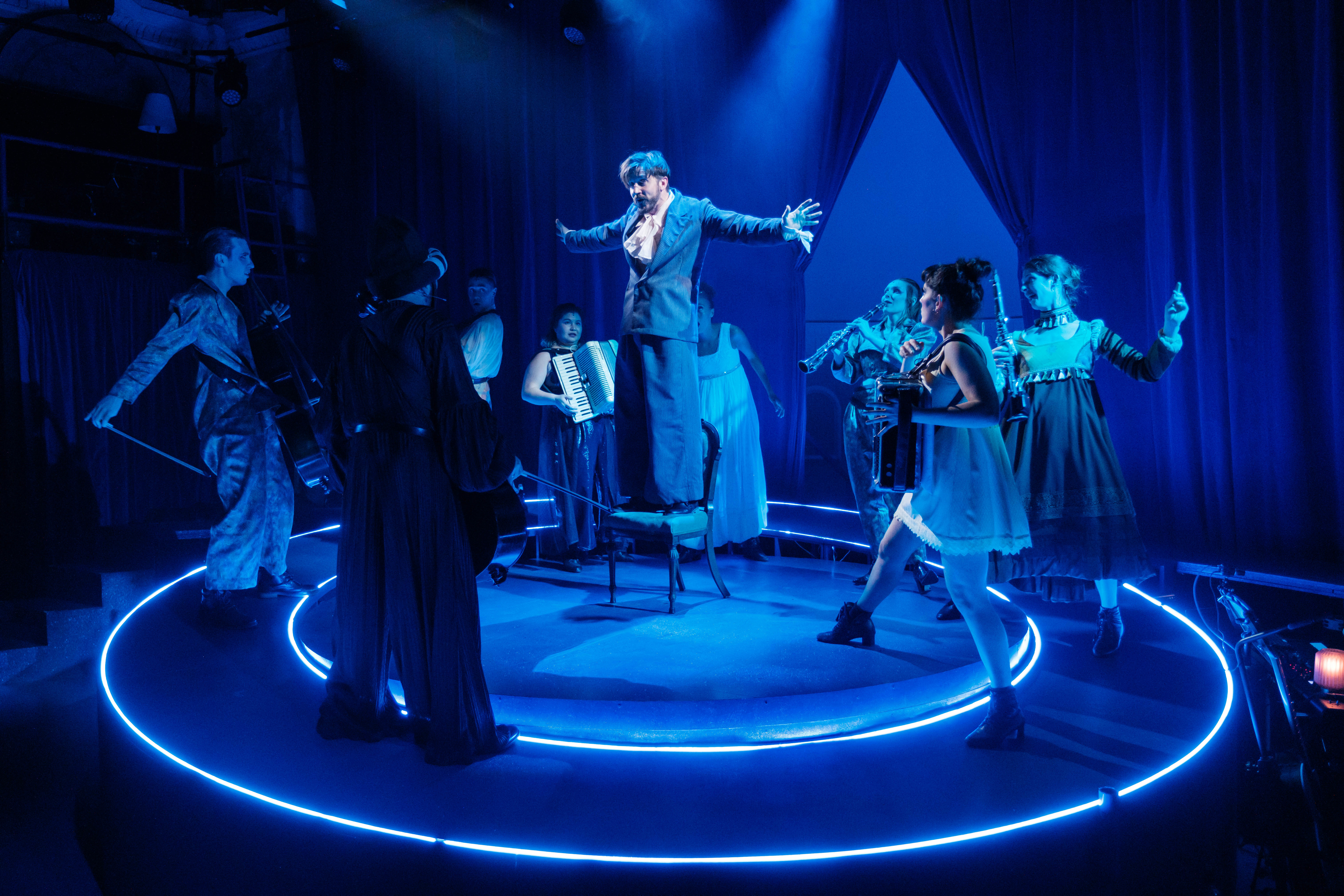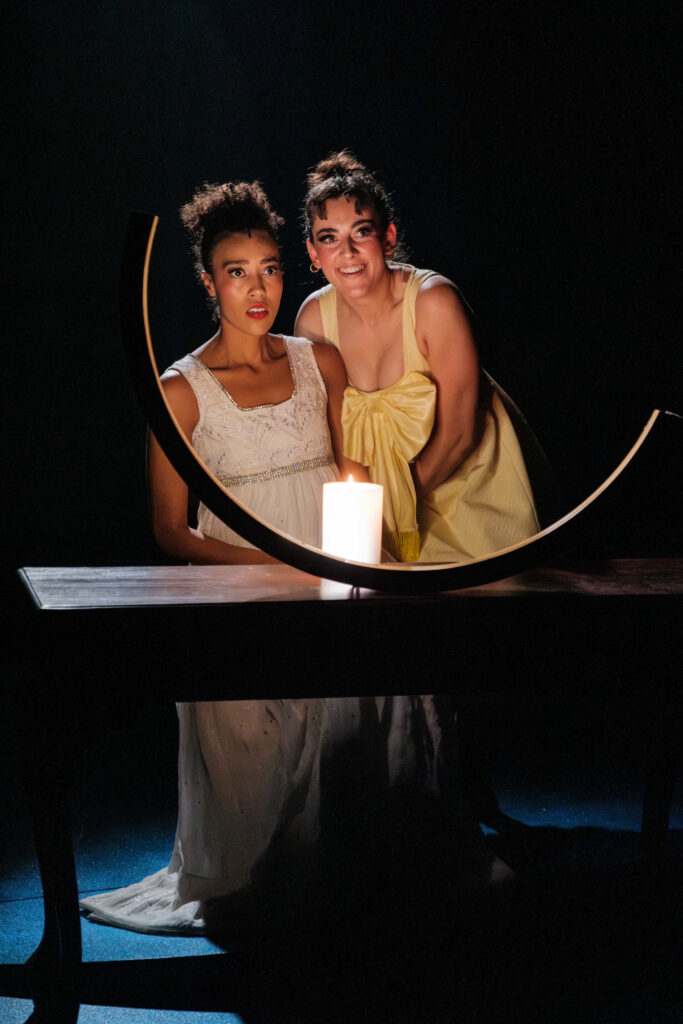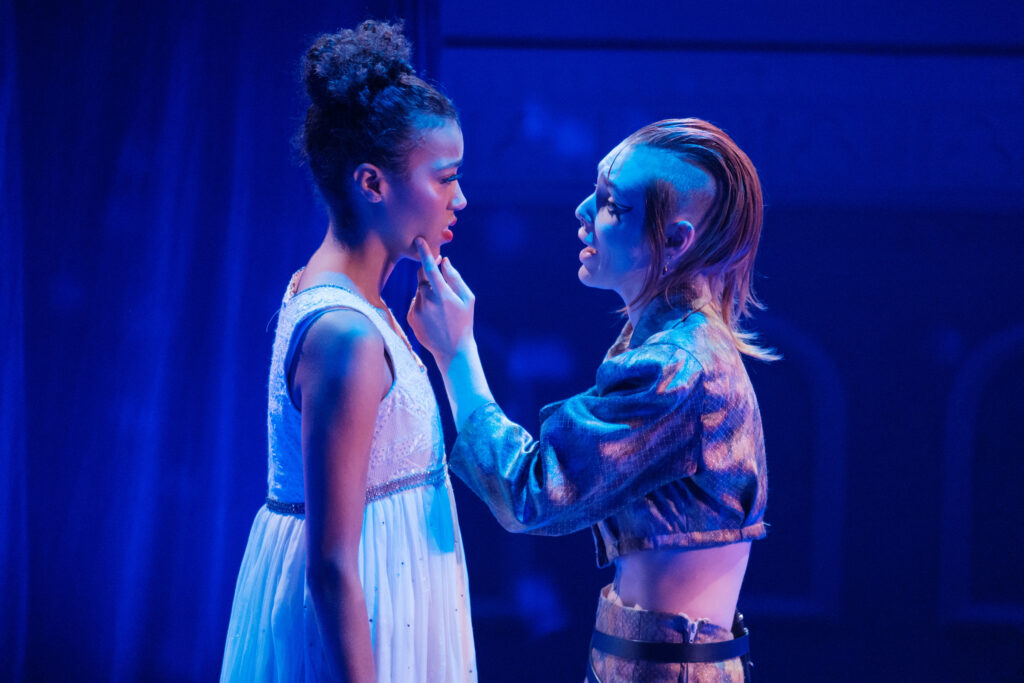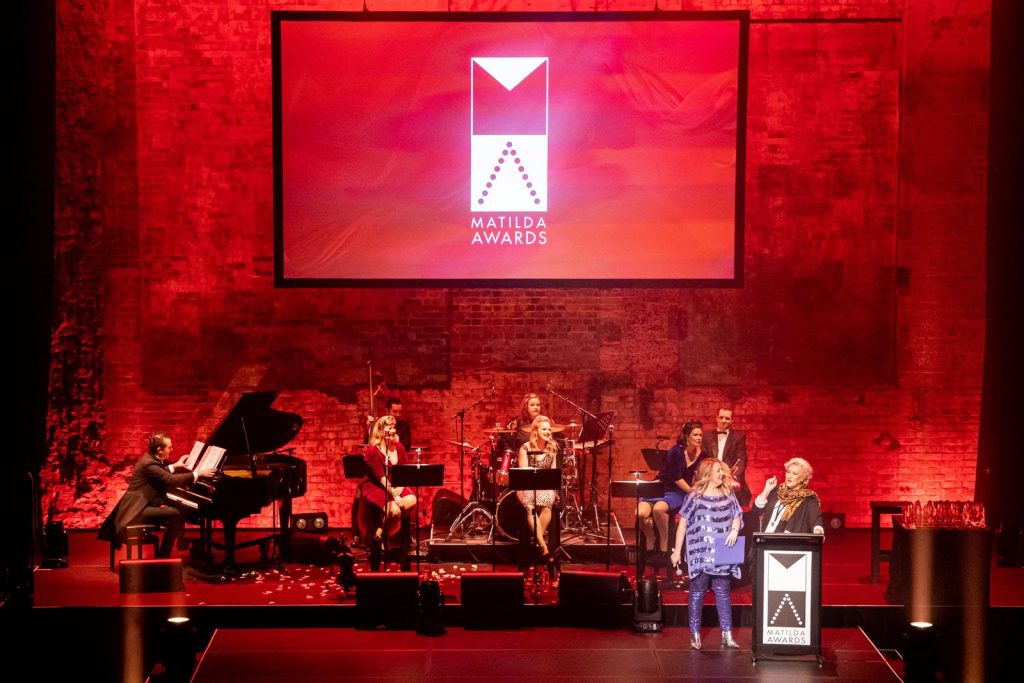
‘Natasha, Pierre and The Great Comet of 1812’ // Darlinghurst Theatre Company
‘Natasha, Pierre and The Great Comet of 1812’ was liricheskiy.
Making its Australian premiere, ‘Natasha, Pierre and The Great Comet of 1812’ has flown into orbit at the Eternity Playhouse, in a presentation by Darlinghurst Theatre Company.
Adapted from Leo Tolstoy’s 1869 novel, ‘War and Peace’, the innovative and completely sung-through musical is composed by the celebrated Dave Malloy. Unfolding in 1812, the story revolves around the young and impulsive Natasha (Grace Driscoll), who is eagerly anticipating the return of her fiance Andrey (P. Tucker Worley) from the war front. Amidst a city teeming with hedonism and extravagance, Natasha finds herself irresistibly drawn to the charming yet married Anatole (Jules Pendrith) during a fateful night at the Opera. What transpires from their meeting is pure scandal and Natasha seeks guidance and redemption, turning to the enigmatic Pierre (Zoy Frangos), a troubled soul in the midst of an existential crisis.
‘Natasha, Pierre and The Great Comet of 1812’ first opened on Broadway in 2016, where Josh Groban made his debut in the role of Pierre. With 12 Tony Award nominations and abundant critical acclaim, it’s no surprise that Darlinghurst Theatre Company eagerly chose to stage this production, especially at a time when theatre companies are constantly pushing the envelope of innovation, as this show stands out as an obvious choice. Its original Broadway production fearlessly reimagined the traditional proscenium stage, transforming it into a looping, multi-level performance space, setting a new standard for boundary-pushing theatre experiences.
For Darlinghurst Theatre Company, stage design by Tyler Hawkins aimed to bring these immersive elements to life for Australian audiences, with a similar looping, planetal construction and minimalistic staging. In the centre of the stage, was a circular platform surrounded by an orbital ring, tilted on a 45-degree angle. On either side, the platforms extended around, and audience members sat behind them on high stools as part of the action. The conventional theatre seating was challenged again, with the tiered audience split in two by a catwalk in the middle of the theatre, inviting cast members to play within the audience. A draped curtain layered the back wall with a central opening.
Adding height to the staging, Hawkins also created two areas on either wing of the theatre, only accessible by a ladder. While this showed characters retreating to various intimate locations, it did create sightline issues, as the safety railing for the performance zone completely blocked actors’ faces when they sat down – a shame for Frangos who often sat down at his keyboard.
Lighting design by Veronique Bennett doused the stage in various midnight blues and warm orange glows, and LED striping on the edge of the platforms also added a modern touch. A particular highlight of Bennett’s design was during Natasha and Anatole’s meeting at the Opera, where a white domed lighting grouped the two together in their own love-fuelled world. Unfortunately, there were moments where the lighting choices blinded the audience in an uncomfortable pattern. Particular attention should be paid to the leftside audience who had to shield their faces whenever Frangos used his Pierre lair, as a spotlight was terribly positioned.
Fresh off their success as the Resident Director of ‘Hamilton’, it was clear that this experience has influenced director Dean Drieberg’s style and vision for this debut, especially in ensuring the ensemble works hard alongside the action to help form the narrative. In a particular scene, the use of the ensemble moving letters passed between the sender and receiver bore some resemblance to the letter choreography observed in ‘Hamilton’. This type of choreography by Brendan Yeates was heavy throughout the production.
With that, there was an issue where scenes didn’t land with the impact they should have. There may have been too much emphasis placed on moments that added nothing much to the narrative, over the parts which do, this meant the plotline was confusing to audience members in parts. Whether it be the stage design or the pressure of having to stage the debut uniquely, there was a fluidity that was lost between scenes, so tension was lacklustre in pivotal moments (like the dual between Pierre and Dolokhov). This was largely caused by scene changes that lagged or the awkward time waiting for players to climb the noise-rattling ladder to the top. Moments like this detracted from the overall synergy of ideas, which didn’t seem to deliver.
An example of this mismatched cohesion would be the point of the chairs, which were stacked and balanced on top of each other during the Russian-inspired dance number, ‘Balaga’. They were later positioned like a cage enclosure for Marya (played by Jillian O’Dowd) to move along awkwardly, while she angrily confronted Natasha about her affair. This choice in staging was quite abstract, and it was unclear the location where the two were speaking to each other. Compare those to previous moments where the set items were quite literal (the use of the dresser, when Natasha and Sonja are staring into the mirror), and it didn’t quite work.
Drieberg, alongside Musical Director, Claire Healy utilised the skills of an extremely talented cast, where actors become musicians, in a similar style to what we’ve seen in the musical ‘Once’. The production seamlessly weaves an eclectic mix of musical styles, ranging from folk and indie-rock to electro-pop and techno, resulting in a genre-defying experience. At times, sound levels and timing were out, which meant beats didn’t land as sharply, but this is a certain risk to having music live and actors doubling as the musicians in the production.
As for the cast, the whole ensemble worked together throughout the performance. Standout performances were delivered by P. Tucker Worley who doubled as the love-lost Andrey and older decrepit Bolkonsky, showing much versatility and characterisation between both roles. Also in the chorus, Worley and Cameron Bajraktarevic-Hayward as Dolokhov were the sharpest dancers.
Kala Gare as best friend Sonya was a wide-eyed wonder, who showed their musical ability in full flight, across the keyboard and accordion. There was a warmth in Gare’s honest performance, especially in the solo ‘Sonja Alone’, which was incredibly passionate. This was a scene, however, where the direction did take us out of the world of the play, as Gare took the seat where the Musical Director was on keys. While this is a twofold commentary, as we were treated with Gare’s piano-playing, it would have been more impacting to the storyline to see her have her character’s moment centre stage.
Zoy Frangos portrayed Pierre enigmatically, showing a heartfelt journey as the character grappled with feelings of disillusionment and a sense of purposelessness. As Natasha, Grace Driscoll had a fantastic naivety in moments, however, there could have been a deeper exploration of the character within their more emotional plot points. Jillian O’Dowd as Marya was strong and stoic and a commanding presence in every scene.
‘Natasha, Pierre and The Great Comet of 1812’ has made its Australian premiere with a mix of highs and lows. While some elements were lost in the cosmic flow, and further exploration into the production could have aided in its overall cohesion, the show did showcase the talents of a diverse cast. While the production’s ambition was to travel beyond the usual theatrical orbit, it seemed to hover just shy of reaching its full potential.
‘Natasha, Pierre and The Great Comet of 1812’ performs until Sunday, 20 August 2023. For more information visit their website.
Photography by Robert Catto








